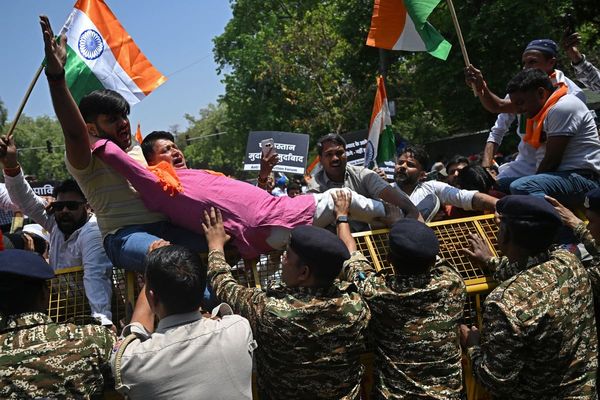interview
Priya Abraham, Director, Indian Council of Medical Research (ICMR)-National Institute of Virology (NIV), Pune, in an interview with The Hindu’s Bindu Shajan Perappadan, while warning that it’s premature to say COVID-19 is over, assures that the country is prepared to face monkeypox. Dr. Abraham explains that with human beings pushing into wildernesses and coming into closer contact with animals, the chances of pathogens spilling over from animals to humans become more likely.
India has lowered its guard against COVID-19 as far as travel restrictions, opening up of the economy, and mandatory testing is concerned. What then is the current danger with pockets around the world still in COVID’s red zone? Also, does India need to worry about monkeypox?
India has been in a fairly good space over the past few months as far as the COVID pandemic in concerned. We have a large section of the society that’s double vaccinated, there is fair amount of immunity following natural immunity, and Omicron doesn’t seem to be registering the large number of fatalities that was seen with the previous COVID variants. Vaccines are certainly preventing serious disease, hospitalisation, and death.
But to say that it’s all over would be premature right now. We are seeing now an uptick in cases in Mumbai over the last few days. We don’t know how this virus will behave in the coming months and how or when a virulent variant may appear.
India’s laboratory strength has been scaled-up during this pandemic and currently we have more trained staff and the required equipment to perform tests. The surveillance network in the country has been reinforced and is fairly robust, and on the medical side, doctors (both in the government and private sector) have seen the benefits of recognising and registering any worrying trends promptly.
As for monkeypox, we know that it spreads through large droplets, close contact, etc. Monkeypox is not causing a pandemic. However, as of June 1, over 500 cases have been reported across 26 countries. We have to watch and be prepared. The Ministry of Health and Family Welfare has published guidelines for the management of monkeypox.
Also, during the COVID-19 pandemic, India has become broadly prepared in terms of laboratory strength, training and diagnostic equipment. Monkeypox is to be treated as a biosafety risk level 3 pathogen. Therefore, it will be handled only in a high containment laboratory. ICMR-NIV is that only laboratory that will be testing suspected cases. As part of quality control, testing will be done in parallel in two separate laboratories at the institute initially, before the presence of monkeypox in the country can be declared.
Speed and accuracy are both vital when dealing with any disease. Monkeypox seems to be less transmissible and the currently circulating clade of the virus is associated with much lower fatality, yet we are prepared. Our lab will also be doing whole genome sequencing of the positive cases.
How good are repeated booster COVID-19 vaccine doses and mixed doses against the SARS-CoV-2 virus?
There is no evidence to show, as of now, that repeated booster doses [fourth and fifth doses] would help an individual. There are, however, countries where this trend is prevalent but India, so far, has not recommended this.
Is India or the world prepared for another COVID-like outbreak given that human-wildlife interface is becoming far more common and closer than ever before, and we are living in a state of climatic changes?
A change in global temperature by even one degree has far-reaching changes in terms of animal-human interface and the environment. With human beings pushing into forest spaces and coming closer in contact with animals, the chances of animal-to-human spillover becomes more likely.
We have to treat our environment and our natural resources with respect and care. The pandemic has taught us that animal to human spillover [of pathogens] is possible and that it can cause devastation that is unprecedented.
India is now working towards setting up a One Health Centre in Nagpur, which should be ready in about two years time. This centre is primarily focused on a holistic approach towards detecting infections, where veterinary and medical scientists will work alongside each other to understand, anticipate and, in the long run, prevent zoonotic spillovers.
One Health is an approach calling for the collaborative efforts of multiple disciplines working locally, nationally and globally, to attain optimal health for people, animals, and our environment.
Have we been able to pin-point the specific cause or reason for the COVID-19 outbreak? What is the ‘most likely’ theory that the scientific community says is emerging?
There is no black-and-white answer as to how COVID-19 came about. International experts have looked into the possible sources and the more plausible theory is the spillover from the Huanan live animal and seafood market in Wuhan city. Now, more than ever before, we understand the risks of zoonotic spill overs. We have developed systems and a better awareness after COVID-19….now is the time to build on this foundation to keep up the momentum. We have to ensure that we stay alert and prepared and that is really the way forward.







